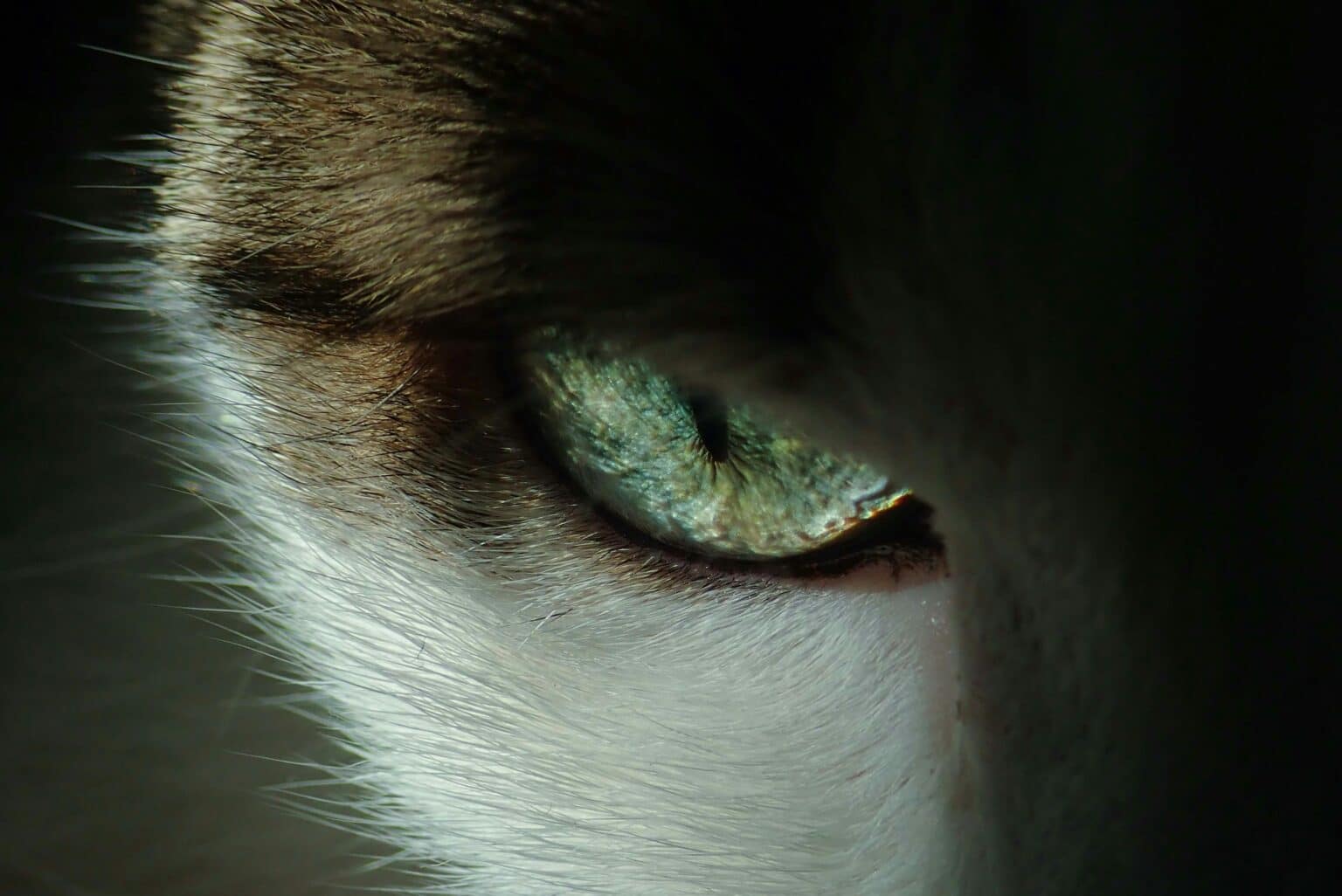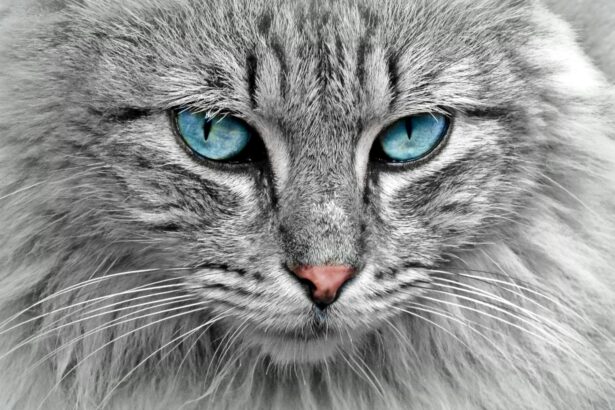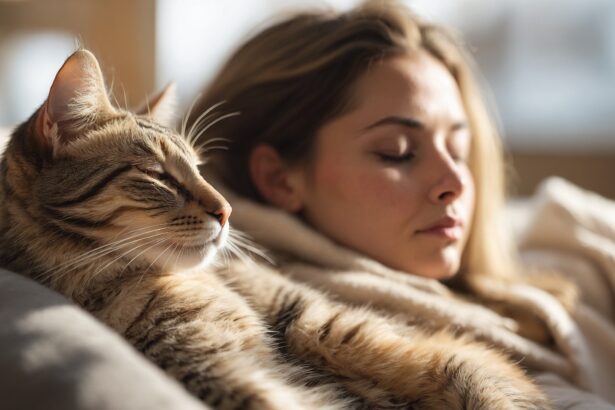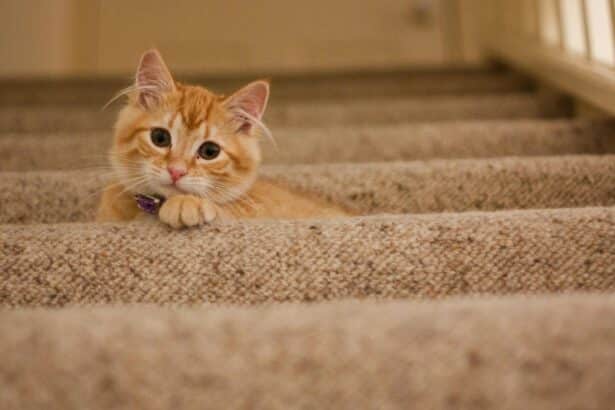Ever looked into your cat’s eyes and wondered what the world looks like from there? Understanding how cats see makes playtime richer, your home smarter, and your bond even softer. Ready to slip behind those whiskers and discover their amazing vision?
Do cats see in color?
Not black and white, but not rainbow either
Cats don’t see a grayscale world, but they do see fewer, softer colors than we do. Research summarized by Science & Avenir shows that felines are less sensitive to color intensity.
So what shows up clearly? Blues, greens, yellows, and lots of grays. Reds and pinks, on the other hand, are mostly “meh.”
The best colors for toys and accessories
- Pick toys in blue or green for visibility.
- Use yellow accents on puzzle feeders for easy spotting.
- Avoid relying on red or orange—your cat won’t see them as vividly.
Practical tip: Add a tiny blue or green washi-tape dot to your cat’s favorite hiding spots or puzzle feeders. It acts like a visual “bookmark” for feline eyes and boosts engagement.
Want more play ideas your kitty can actually see? Try movement-first options like wand toys and interactive cat toys that flutter and zip.
Why cats crush the night shift
Their eyes are built for dusk and dark
Two superpowers make night vision possible: a reflective layer called the tapetum lucidum (hello, glowing eyes!) and pupils that expand wide to drink in light. Their retinas are also packed with rods, the cells that excel in low light.
Surprising fact: cats have a discreet third eyelid (the nictitating membrane) that helps protect and lubricate the eye—handy for little night stalkers.
How this shapes nighttime behavior
Zoomies at midnight? That’s their natural rhythm. Crepuscular animals are most active at dawn and dusk, and your cat’s eyes are perfectly tuned for it.
- Offer late-evening play to burn energy.
- Use soft, warm lighting to reduce harsh glare at night.
- Save a small snack for bedtime to encourage sleep after play.
If late-night serenades are part of the show, this guide on why cats meow at night will help you decode the chorus.
Distance and motion: what cats see best
Movement is their love language
Felines are hardwired to detect motion—swift flickers, tiny twitches, even the shiver of a feather. That’s why a simple ribbon or fly can turn your living room into a safari.
- Short, quick bursts mimic prey.
- Erratic, zigzag movements beat predictable ones.
- Shiny reflections and shadows keep interest high.
Sharp at near-to-mid range
Cats see most clearly from about a foot away up to a couple of meters. Farther than that, details get fuzzy, but motion still pops.
Smart setup: Place climbing spots, scratchers, and toys within that visual sweet spot. Keep a comfy view near a window so your cat can track birds and leaves without strain.
Curious why tail-chasing or flicking happens during high focus? You may enjoy this read on why cats play with their tails.
Do cats recognize our faces?
They know you—just not the way you think
Your cat identifies you by your voice, scent, footsteps, and routines more than by facial features. A fresh haircut won’t fool them, but new perfume might!
- Talk softly to announce yourself.
- Keep key routines (feeding, play) consistent.
- Use familiar scents on new items to ease acceptance.
Common mistake to avoid: Relying on bright red toys or accessories and thinking your cat is “bored” when they don’t react. Reds are harder for cats to pick up—switch to blue or green and watch the difference.
Notice your shadow always has four paws? Here’s why your cat follows you everywhere and what it says about your bond.
Make your home easier on feline eyes
Small changes, big comfort
- Choose toys with contrast against your flooring (blue/green on beige, yellow on dark wood).
- Layer textures: crinkle tunnels, soft mats, and sisal boards add variety beyond visuals.
- Use daylight whenever possible; cats prefer natural, diffuse light.
Play safely and with purpose
- Save fast, chase-style games for late afternoon or evening.
- Rotate toys weekly to keep novelty high.
- Laser pointers are fine in moderation—just never shine near eyes and end with a “catchable” toy for satisfaction.
Thinking of adding height and better sightlines? A sturdy cat tree can be transformative. Here’s a handy guide to choosing the best cat tree for your space.
Conclusion
Now that you know how cats see—muted colors, sharp motion, night magic—you can tailor your home and playtime to their strengths. In the end, your voice, scent, and rituals paint the clearest picture of you.
So, when those eyes lock onto you from across the room, they may not read every detail—but they see the person they trust most.
FAQ
Can cats really see in total darkness?
No. Their night vision is excellent, but they still need a little light to make out shapes and movement.
What colors can cats see best?
Blues, greens, and some yellows are clearest. Reds and pinks are much harder for them to distinguish.
Do cats recognize human faces?
They rely more on voice, scent, and routine than facial details. Consistency helps them feel secure.
Why do my cat’s eyes glow at night?
That shine comes from the tapetum lucidum, a reflective layer that bounces light back through the retina to boost low-light vision.








